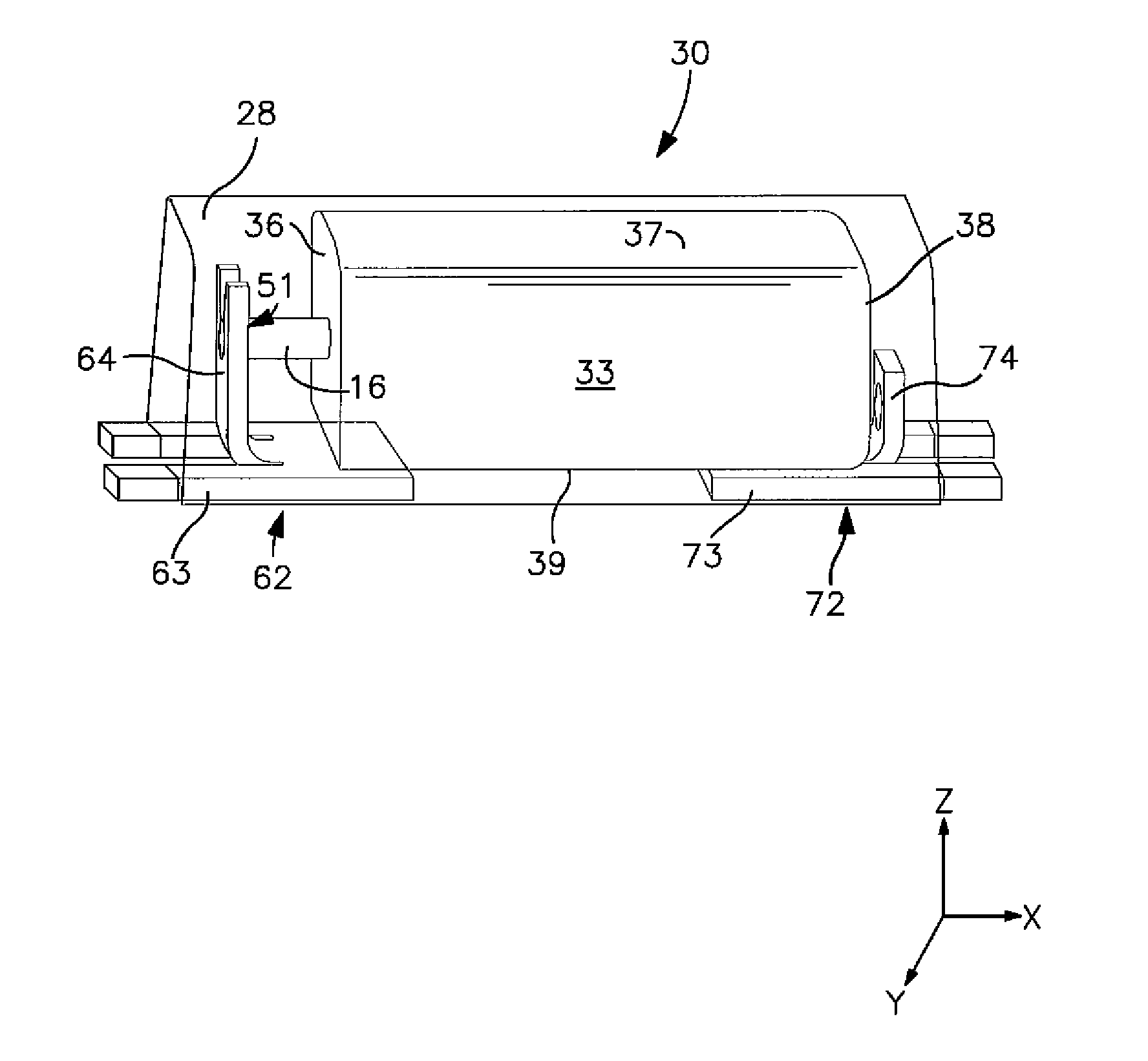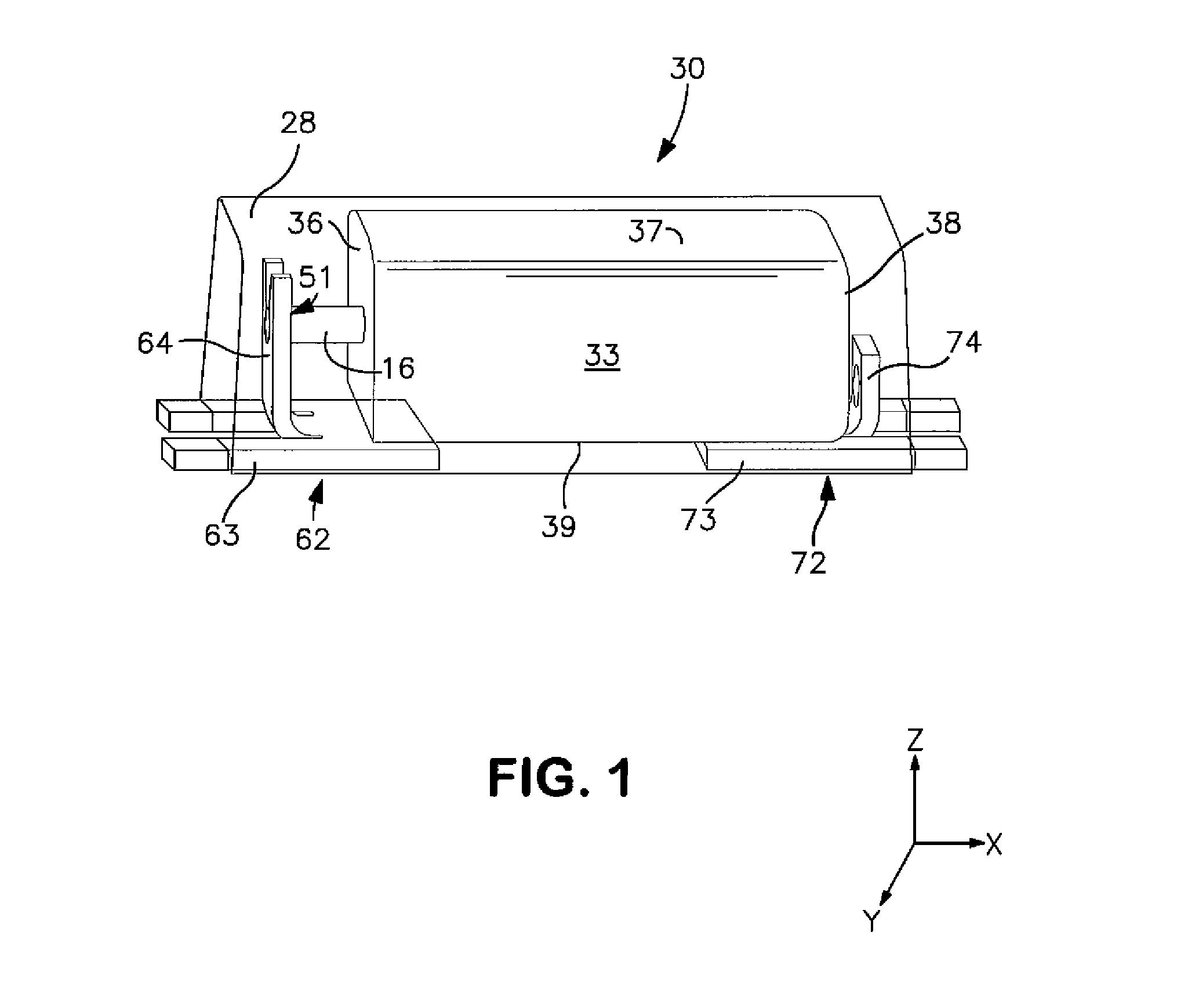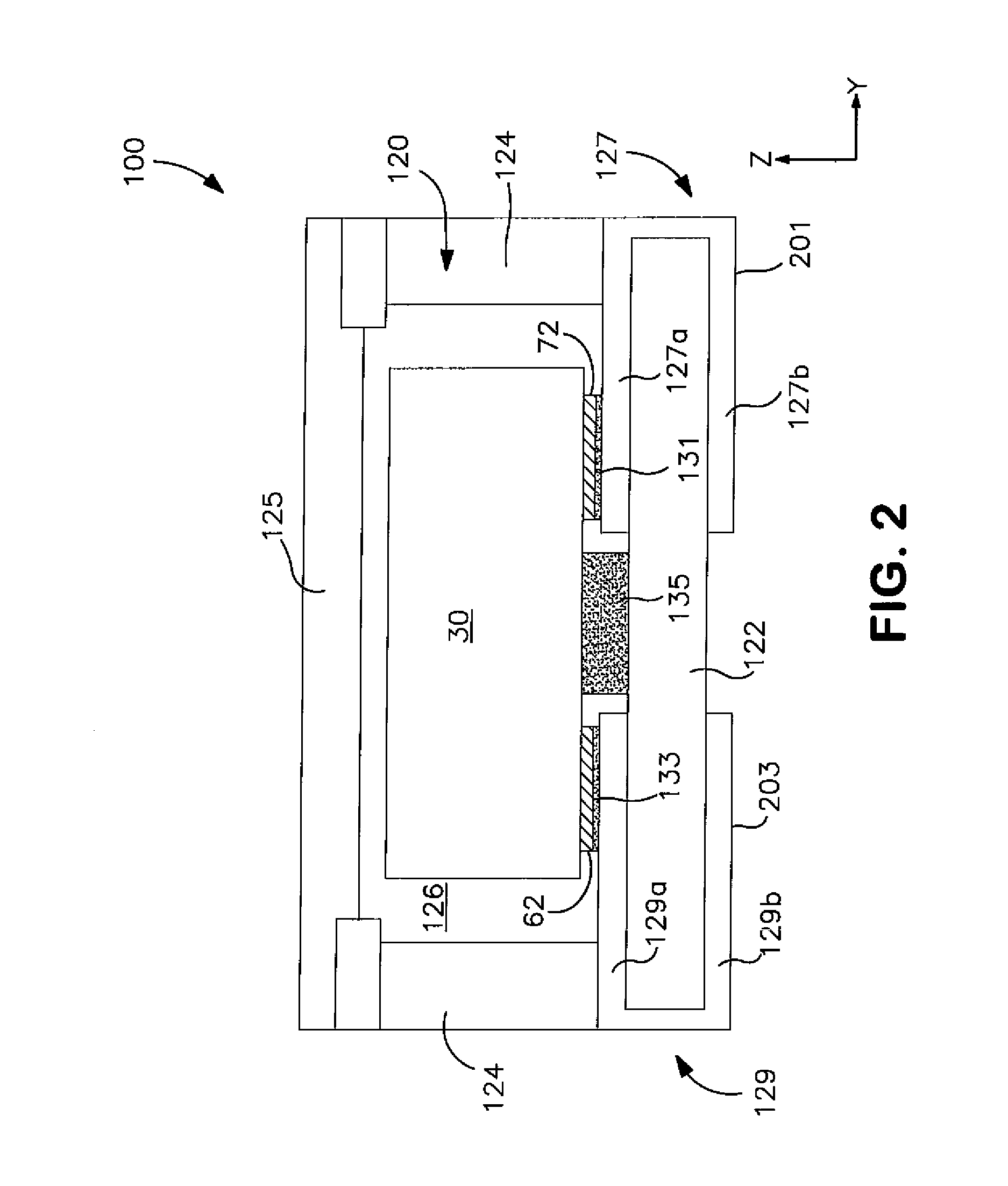Solid electrolytic capacitor assembly
a technology of solid electrolytes and capacitors, which is applied in the direction of liquid electrolyte capacitors, electrical apparatus casings/cabinets/drawers, and hermetically sealed casings, etc., can solve the problems of poor stability of solid electrolytes at high temperatures
- Summary
- Abstract
- Description
- Claims
- Application Information
AI Technical Summary
Benefits of technology
Problems solved by technology
Method used
Image
Examples
example 1
[0070]Capacitors were formed from tantalum powder having a specific charge of about 70,000 CV / g, which was pressed into pellet samples having a length of 1.85 mm, a width of 2.5 mm, and a thickness of 0.45 mm. Each anode was embedded with a tantalum wire and sintered at 1295° C. for 10 minutes. To anodize the tantalum anode, it was dipped into an orthophosphoric acid / water solution having at temperature of 85° C. to make capacitors with 47 microfarads at 120 Hz. A conductive polymeric cathode was then formed using sequentially applied CLEVIOS™ C (iron III toluene-sulfonate) and CLEVIOS™ M (3,4-ethylene dioxythiophene). More specifically, CLEVIOS™ C was dissolved in a butanol solvent and applied to the pellets as a dipping solution. The pellets were then dried to remove the solvent therefrom. Thereafter, the pellets were dipped into a solution containing CLEVIOS™ M. The pellets were then re-anodized in 0.1% phosphoric acid and dried at room temperature for two (2) hours. Eight (8) re...
example 2
[0075]Capacitors were formed from tantalum powder having a specific charge of 150,000 CV / g), which was pressed into pellet samples having a length of 1.8 mm, a width of 2.4 mm, and a thickness of 0.85 mm). Each anode was embedded with a tantalum wire and sintered at 1270° C. for 10 minutes. To anodize the tantalum anode, it was dipped into an orthophosphoric acid / water solution having at temperature of 85° C. to make capacitors with 150 microfarads at 120 Hz. A conductive polymeric cathode was then formed using sequentially applied CLEVIOS™ C and CLEVIOS™ M. More specifically, CLEVIOS™ C was dissolved in a butanol solvent and applied to the pellets as a dipping solution. The pellets were then dried to remove the solvent therefrom. Thereafter, the pellets were dipped into a solution containing CLEVIOS™ M. The pellets were then re-anodized in 0.1% phosphoric acid and dried at room temperature for two (2) hours. Ten (10) repeated sequential dips were performed to build up a consistent ...
example 3
[0079]Capacitors were formed from tantalum powder having a specific charge of 18,000 CV / g), which was pressed into pellet samples having a length of 1.8 mm, a width of 2.4 mm, and a thickness of 0.5 mm). Each anode was embedded with a tantalum wire and sintered at 1500° C. for 20 minutes. To anodize the tantalum anode, it was dipped into an orthophosphoric acid / water solution having at temperature of 85° C. to make capacitors with 2.2 microfarads at 120 Hz. The samples were dipped into a conventional aqueous solution of manganese(II) nitrate and dried to achieve a manganese dioxide cathode. All parts were then dipped sequentially into a graphite dispersion and in a silver dispersion and dried.
[0080]The capacitor elements were then attached to a leadframe, encapsulated, and connected to a ceramic housing as described in Example 1. The resulting assembly was purged with nitrogen gas for 120 minutes before seam welding of the lid was performed. Comparative samples were also made that w...
PUM
| Property | Measurement | Unit |
|---|---|---|
| wt. % | aaaaa | aaaaa |
| wt. % | aaaaa | aaaaa |
| density | aaaaa | aaaaa |
Abstract
Description
Claims
Application Information
 Login to View More
Login to View More - R&D
- Intellectual Property
- Life Sciences
- Materials
- Tech Scout
- Unparalleled Data Quality
- Higher Quality Content
- 60% Fewer Hallucinations
Browse by: Latest US Patents, China's latest patents, Technical Efficacy Thesaurus, Application Domain, Technology Topic, Popular Technical Reports.
© 2025 PatSnap. All rights reserved.Legal|Privacy policy|Modern Slavery Act Transparency Statement|Sitemap|About US| Contact US: help@patsnap.com



